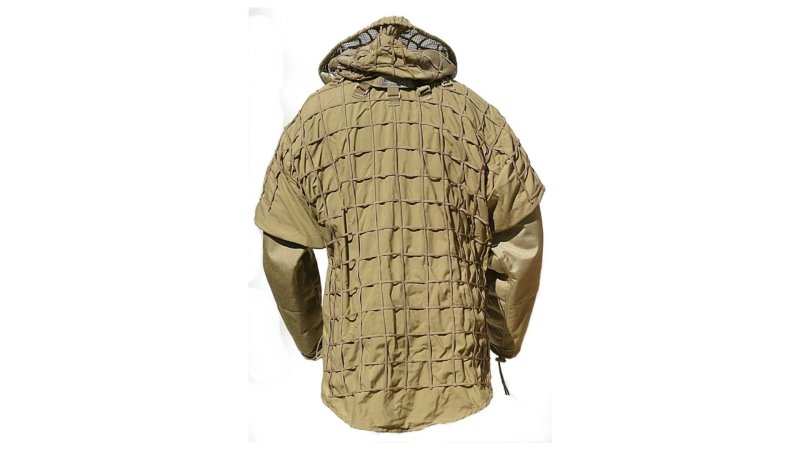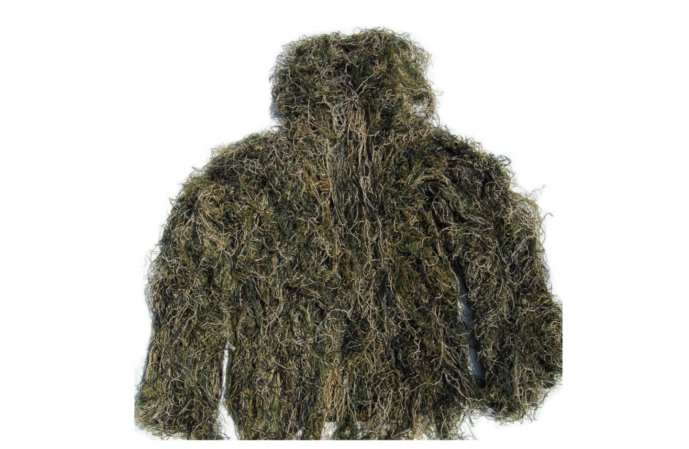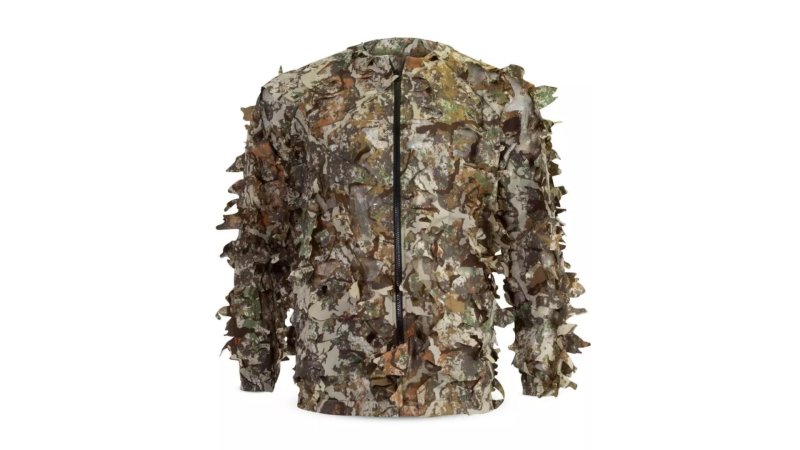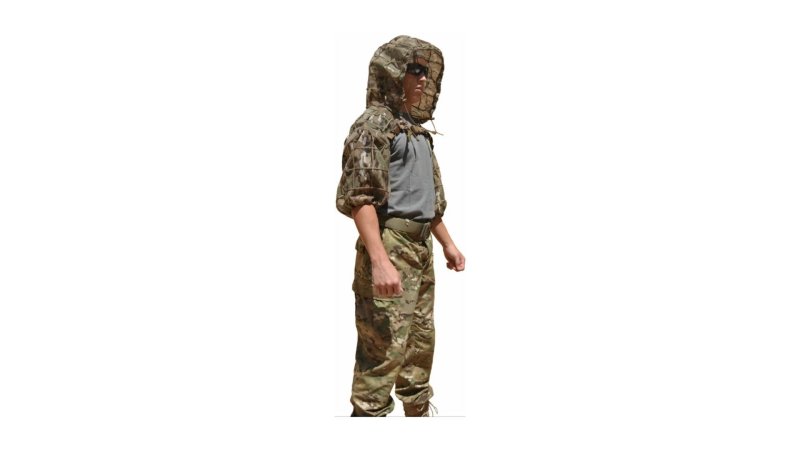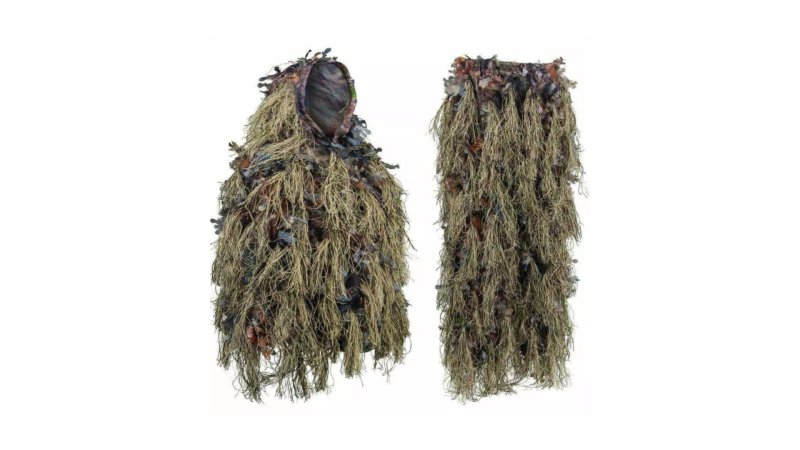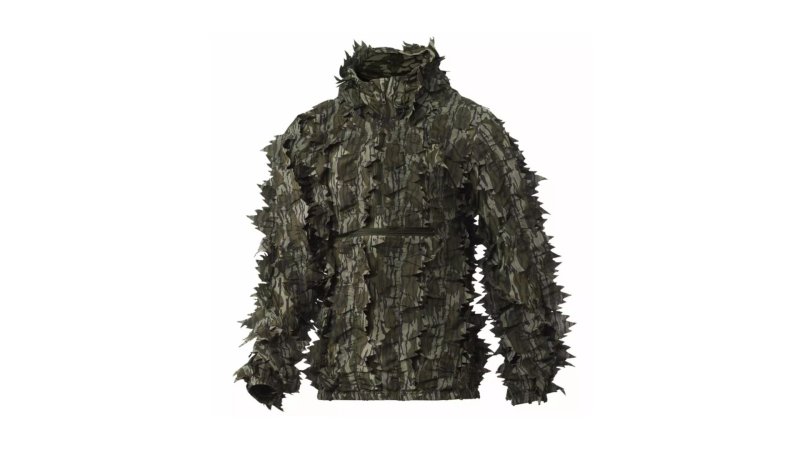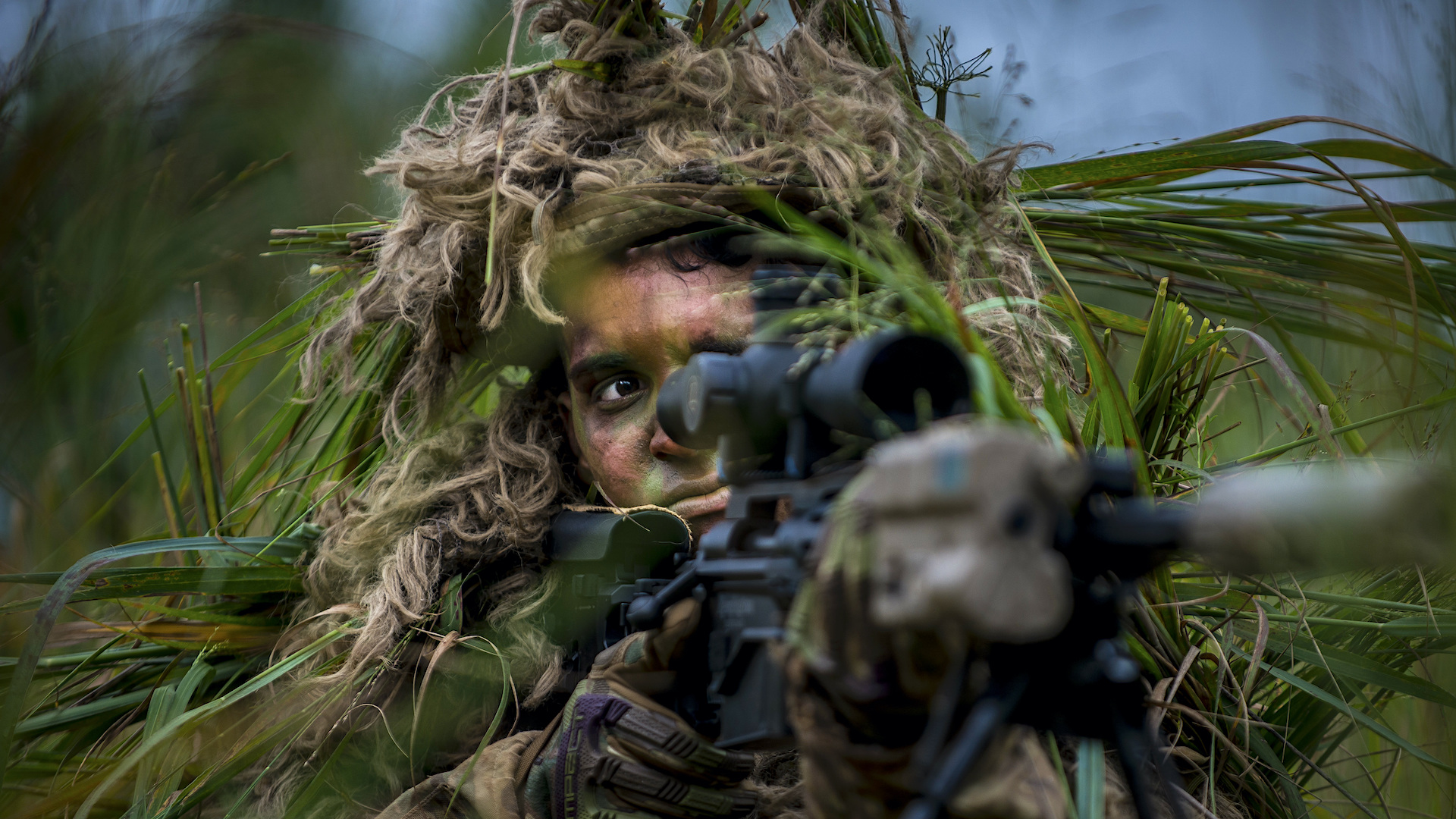

We may earn revenue from the products available on this page and participate in affiliate programs.
The ghillie suit is one of the most iconic pieces of individual kit you will find in the military. For snipers, it is a vital piece of gear that has remained conceptually unchanged since it was first employed by Scottish gamekeepers in the late nineteenth century. The word ghillie (gille) is of Scottish origin, but while its origins may appear modest, its impact on the battlefield is significant. Camouflage and concealment are essential hallmarks of fieldcraft for snipers in their traditional tactical roles.
Ghillie suits are designed to break up the human form that is easily distinguished from the natural environment either due to shape, color contrast, or reflectivity of light from our skin or inorganic surfaces (metal or glass). A common misconception is that the ghillie is designed to make you appear as a shrub or some other natural feature, but the objective of the ghillie is to conceal you and fully integrate you into the environment. Your goal is to not exist.
The best ghillie is perhaps the one that you make, spending countless hours sewing, gluing, and tying in jute. This is a very detailed, deliberate process that took me multiple evenings to complete during sniper school. Thankfully, the market offers some incredible alternatives that will save you time and provide you with a quality piece of kit. While the ghillie is often associated with the battlefield, its original purpose as a piece of field gear for the modern hunter is still applicable.
In the next few sections, I’ll review some great products currently on the market tailored for either the tactical space or geared more specifically for those looking to utilize them recreationally or while hunting.
- Best Overall: Tactical Concealment Original Cobra Hood
- Best Value: BDU Ultra-Light Sniper Jacket and Pant Ghillie
- Editor’s Choice: First Lite Phantom Leafy Suit
- Best Lightweight: Tactical Concealment MCM Viper
- Best Recreational: Hybrid Ghillie Suit Woodland Brown
- Best 3D for Woodlands: Nomad Leafy 1/4 Zip and Pants
Methodology
Researching ghillie suits available on the market is an interesting process. For the consumer, there is no lack of options available. Some of these range from products on Amazon that are probably better suited for Halloween to some of the reviewed products that are field-ready. Some of the criteria that I weighed heavily on were durability and construction, breathability, packability, color palette, and application. As an alternative, 3D leaf suit products were also reviewed that are more specific to hunting. Most of this research was conducted through field testing and prior experience.
The internet is full of forums and articles on ghillies. There’s no doubt there exists some great information out there, as well as not-so-great. My experience is diverse, but I don’t know everything. For additional reference, I also reached out to others with similar backgrounds like KUIU’s Justin Shaffer, who is also a former Army sniper, and Matt Zirnsak from The Push Archery who uses ghillies to hunt turkeys and white-tailed deer. With these additional perspectives, I jumped head-on into product reviews and other top ghillie lists.
Each product listed in this review was carefully researched, procured, and field-tested. I’m positive this list contains a product that will match your requirement whether it’s tactical in nature or as a hunter in the field. To learn more about Task & Purpose’s testing protocols, click here.
Best Overall
Tactical Concealment Original Cobra Hood
Pros
- Durable construction
- Lightweight for size
- Breathability due to integrated venting
- Flexible design that accommodates all kits and body armor
Cons
- Not field-ready, requires jute
Best Value
BDU Ultra-Light Sniper Jacket and Pant Ghillie
Pros
- Field-ready
- Bombproof construction
- BDU and jute customization
Cons
- Heavy due to its size
- Bulky item limits its packability
Editor’s Choice
First Lite Phantom Leafy Suit
Pros
- Lightweight construction
- Extremely breathable due to design
- Multiple camouflage patterns
- Price point for both the jacket and balaclava
Cons
- Durability due to lightweight construction
Best Lightweight
Tactical Concealment MCM Viper
Pros
- Extremely lightweight
- Durable construction
- Integrates with and accommodates any tactical kit
Cons
- Not field-ready, requires jute, and break-in is recommended due to mesh thickness
Best Recreational
Hybrid Ghillie Suit Woodland Brown
Pros
- Hybrid concept integrating 3D fabric and jute
- Lightweight construction
- Affordability
Cons
- Not designed for rugged field use
Best 3D for Woodlands
Nomad Leafy 1/4 Zip and Pants
Pros
- Lightweight construction
- Moisture-wicking and antimicrobial (resists bacteria growth that makes it stink)
- Quiet fabric
Cons
- Durability may be a concern due to lightweight nature of textiles
- Camouflage options are on a dark palette scale
Our verdict on ghillie suits
The market isn’t short on ghillie products. There are some great companies producing quality ghillie suits and components. There are also some that I wouldn’t wear on Halloween. As the consumer, you have specific requirements, and when purchasing a ghillie, you should approach this as an investment rather than a casual purchase. That said, after careful research and field testing, Tactical Concealment’s Original Cobra Hood earned the award for Best Overall. Its superior combination of durability, functionality, and lightweight construction set it apart from competing products. For those looking for the Best Value, look no further than Miles Tactical’s BDU Ultra Light Sniper Jacket and Pant Ghillie. This ghillie is field-ready, fit, and finished out of the box. First Lite’s Phantom Leafy Suit and Phantom Balaclava combo earned the Editor’s Choice award for best 3D suit design more specific to hunting.
What to consider when buying a ghillie suit
Types of ghillie suits
Tactical
Finding the right ghillie for your intended purposes is a deliberate process. Ghillies designed for the tactical environment are going to be engineered to withstand the demands of the operational environment in which they will be employed. From urban to mountain operations, ghillie suits need to be constructed in such a way that they give the sniper the structure to integrate local vegetation to assist in concealment. These garments are created to be resilient against intense use that will compromise a lower-quality product. Generally, due to their weight, venting is required for increased breathability. The packability of a ghillie is worth considering since most snipers will be self-supported and this requires additional water, batteries, and optics that will fill much of a sniper’s ruck.
A lightweight tactical ghillie is an attractive option. It offers most of the concealment benefits at a fraction of the weight. Increased breathability and packability are added bonuses. In today’s modern battlefield, these lightweight ghillies can easily be worn over issued body armor or plate carriers. They often have hoods that accommodate current ballistic helmets as well.
Recreational
Ghillies designed for recreational purposes will inherently lack the durability of those designed for tactical applications. They are generally lighter weight in construction and lack the quality of materials and stitching used in the aforementioned category. Due to their lighter weight, they are easier to transport, offer a good range of motion, and are breathable. A good recreational ghillie will adequately break up the human form. It should also be cost-effective for the role it’s intended for.
Hunting
For the modern hunter, the ghillie in its 3D leaf suit variation has come full circle. Yes, you can use a traditional ghillie for pursuing game in the field, but the 3D suit offers the same concealment and outline breakup benefits without the weight penalty. The 3D leaf suits are lightweight and breathable. Generally, they are designed to be worn over your layering system, giving them a wide range of conditions in which they can be utilized.
The hybrid ghillie is an interesting evolution for the hunter to consider. It’s also a texturing technique applicable to the tactical ghillie. Combining traditional jute and garnish with the 3D cut fabric improves outline breakup.
Key features of a ghillie suit
Quality construction
Without question, ghillie construction is the most important consideration. The textiles and stitching used will determine a ghillie’s durability in the field. Webbing requires bartacking and the webbing should provide flexibility for movement but also hold tight to the host fabric. Venting shouldn’t be overlooked; mesh panels sewn into the backs of jackets and hoods helps to dump heat (thermoregulate).
Some ghillies incorporate a hood, but the boonie is standard. It’s modified with venting on the top and webbing is bartacked as an overlay for jute and garnish application. Ideally, a boonie will have more webbing/mesh in the back that can serve as a veil. The sniper can use this veil to drape over optics, concealing them from being observed and mitigating the reflectiveness of the objective lens.
Quality construction and materials are expensive, but it’s an expense worth paying for. These garments are purpose-built, and for the sniper or other reconnaissance soldier, having confidence in your gear is paramount in the field.
Color palette
Ghillie suits should incorporate colors that are lighter in nature. You will struggle to lighten a dark ghillie. Dark ghillies stand out in nearly any environment but a light ghillie can naturally be darkened with vegetation and shadows. The human eye will quickly pick out a dark shape and outline. The Marine Corps’ desert MARPAT and the Army’s Desert Combat Uniform (DCU) make excellent base garments for ghillie suits.
The primary area to focus on jute and garnish application is the head and shoulders. This is the most distinguishable part of the human form and special attention should be devoted to breaking up this outline. Quality ghillie suits will provide ample webbing and tie-in points for this specific purpose.
Application
Due to the different applications for ghillie employment, ghillies are generally tailored for the intended use. Tactical ghillies are built for durability, which means they are generally heavier. Recreational ghillies lack this robust construction because it is neither required nor necessary. Often, recreational ghillies are worn over other clothes and are lightweight and compressible. Understanding your application will help you to better determine which ghillie is the ideal fit.
Ghillie suit pricing
There are some budget-oriented ghillie products out there, but you won’t find that cheap option in this guide. You can construct your ghillie very economically with a pair of old BDUs using your grandmother’s sewing machine, mesh, and webbing. It requires patience and time. If that doesn’t sound enticing, then this guide will provide you with quality options for your needs.
Tactical ghillies will run you $200 to $500, while quality recreational ghillies can be had for as little as $100. These prices may appear steep, but a quality ghillie will outlast most of your needs.
Tips and tricks
- Lighter is better than darker. You can always darken a light palette, but you can’t lighten a dark one.
- Shadows — from the tactical environment to the field, shadows are your friend. Shadows conceal movement and glare, and they naturally make you (or anything) more difficult to distinguish.
- When tying in jute, less is more. There are too many examples of ghillies making the wearer look like Chewbacca — that’s poor execution.
- The key to a great ghillie is using the same vegetation in the area in which you’re operating or hunting. Don’t forget to “reveg” as you transition from point A to B. Unless you’re stalking across an agricultural field that is a monoculture, you will need to take time to update the vegetation you use to match that of your surroundings.
- Women’s hair ties are perfect for tying in vegetation.
- Ghillies require periodic maintenance, so inspect the stitching, webbing, and jute for general condition and security.
FAQs about ghillie suits
You’ve got questions, Task & Purpose has answers.
Q: How effective are ghillie suits for hunting?
A: They are certainly an effective tool for the ground hunter, from the turkey to the deer woods. Matt Zirnsak from The Push Archery had a close call with multiple black bears on a hunt. Luckily, black bears are generally shy creatures. For the mobile hunter, the ghillie gives you great concealment, but you still have to be mindful of the wind and thermals.
Q: Are ghillie suits legal?
A: Yes, there’s nothing illegal about them. I know an insurance fraud investigator who used one to capture footage of a claimant in violation of his worker’s compensation claim. However, the main conflict is the hunting field where you may be required by local or state law to wear orange.
Q: What ghillie suit does the military use?
A: Generally, the individual sniper makes his/her own ghillie, but some units may issue ghillie kits to those in sniper or reconnaissance units.
Q: Do snipers wear ghillie suits?
A: Yes, but it’s very mission-specific. Not all situations will require them, and it’s a piece of kit that most won’t carry unless it’s necessary due to its bulk. That said, they do make great blankets in the field on those cold nights/mornings along the Euphrates River.
